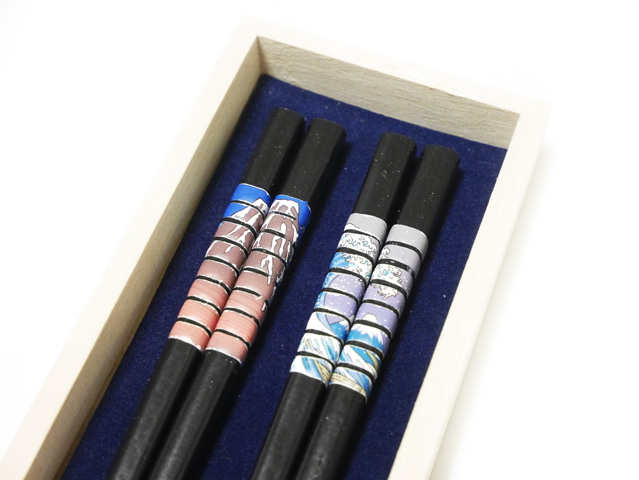Japanese chopsticks distributor
First of all, if you want to get our different Japanese chopsticks catalogs and know the prices for professionals, thank you for using our contact form here.
Akazuki offers professionals a wide selection of made in Japan chopsticks allowing you to consume asian food in the rules of art. Our collection of products includes two categories, namely:
– The traditional chopsticks for restaurants but with undeniable qualities (easy to wash and durability)
– Chopsticks “with style” usually made of wood to make gift sets or enhance a meal at home according to the rules of Japanese art.
All our chopsticks are BPA free for plastic ones. All wooden sticks are certified safe according to the hygiene rules in Japan, regarding the use of lacquer and other coatings.
What are Japanese Chopsticks?
Chopsticks are a kitchen utensil used in all of East Asia. Originally, Chinese were using chopsticks and the two sticks spread to other Asian countries such as Japan and Korea.
The History of Chopsticks
We found the earliest forms of Chopsticks were in bronze and had surfaced around 1200 BCE. These chopsticks were for cooking, unlike modern chopsticks that are more likely for eating. Also, these cooking chopsticks were used in stirring the fire or serving food amongst guests.
Japanese Cooking Chopsticks
Chopsticks from Japan are quite similar to the original cooking chopsticks. In Japan, these utensils are called Saibashi (菜箸; さいばし). Like the original chopsticks, Japanese people use these to prepare foods. Japanese made chopsticks using bamboo wood and are really long . It includes a protective covering over the handle to protect against heat or grease.
Japanese Styled Chopsticks
In Japan, chopsticks are typically sharp and pointed at the ends. Traditionally, they are made from a sort of wood or bamboo and are lacquered as a finishing touch. In contrast, this not only makes them much more functional to use but also very stylish.
Chopstick Etiquette
For example, Chopsticks etiquette differs depending on the country and their respective culture and beliefs. In Japan, the traditional etiquette for chopsticks varies. However, there are a few important etiquette tips to remember. Also, one tip is that chopsticks should never cross each others as this may symbolize death. Another tip to follow is that the pointed ends of the chopstick should remain on the chopstick rest. When not in use, and at the end of a meal, disposable chopsticks are inside their wrappers.
In conclusion, chopsticks are quite similar in other Asian countries however they are famous for their own style and etiquette that makes them unique.
